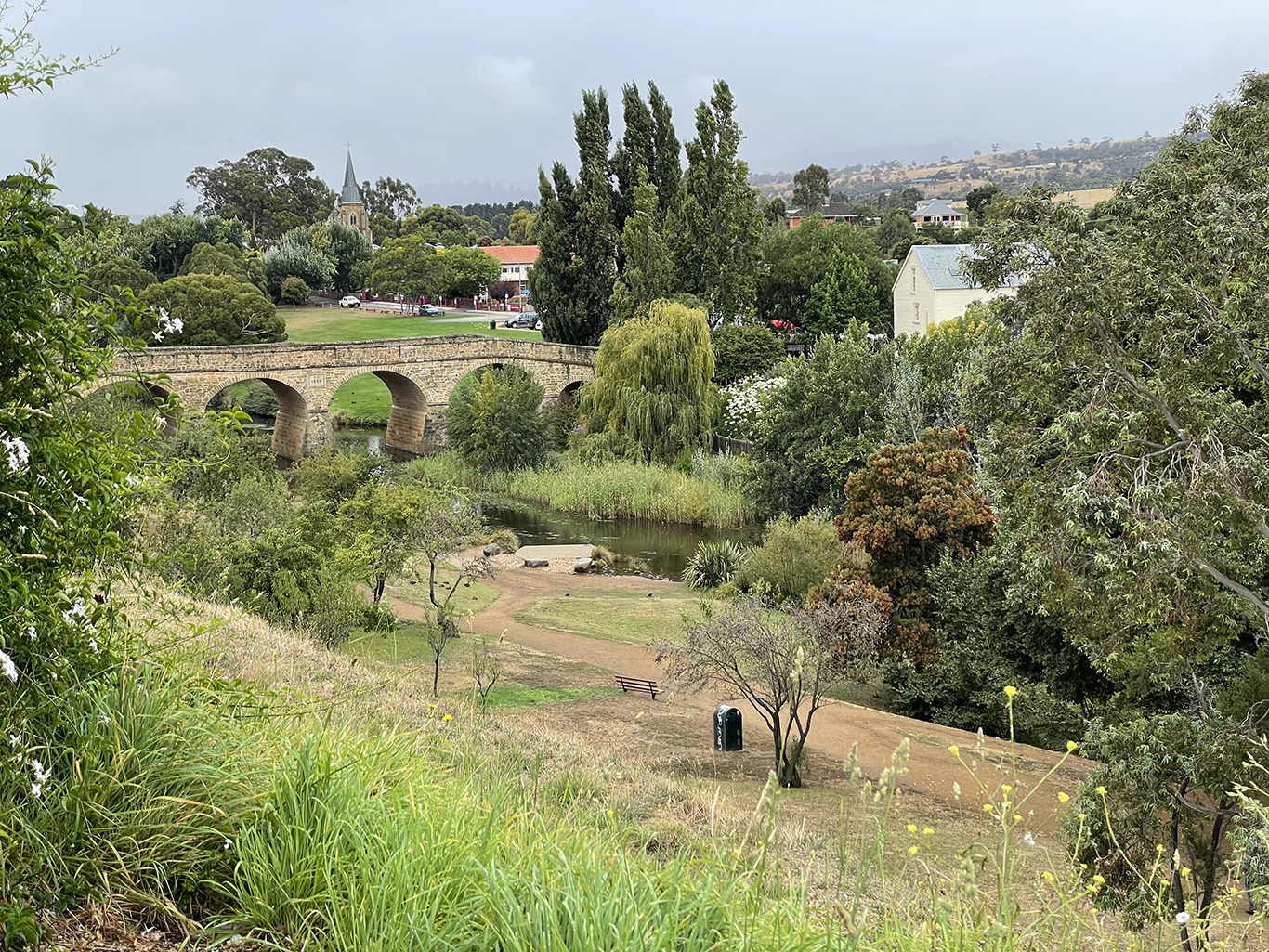
Exploring Tasmania’s Midlands
Road trip from Hobart to Launceston
There are so many beautiful places to visit in Tasmania, but if you like cute historic villages there are a few you shouldn’t miss. Following the Midland Highway between Hobart and Launceston will take you through some beautiful countryside with some great little towns to stop and explore.
Richmond
Just 27km north of Hobart is Richmond, Tasmania’s most quintessentially genteel English-style village.
Initially, a small farming community, Richmond became a key military post and prison station after construction of the Richmond Bridge linking Hobart with the east of the state. The boom ended after the 1872 opening of the Sorrell Causeway which bypassed the town and Richmond returned to its roots as a small rural community.
The convict-built Richmond Bridge is the oldest bridge still in use in Australia and also the oldest stone span bridge in Australia. Those sandstone arches have stood across the Coal River since 1825, and when it was built, it was considered a technological marvel for the colony. The golden sandstone reflects beautifully in the waters below with ducks paddling gently in the river.
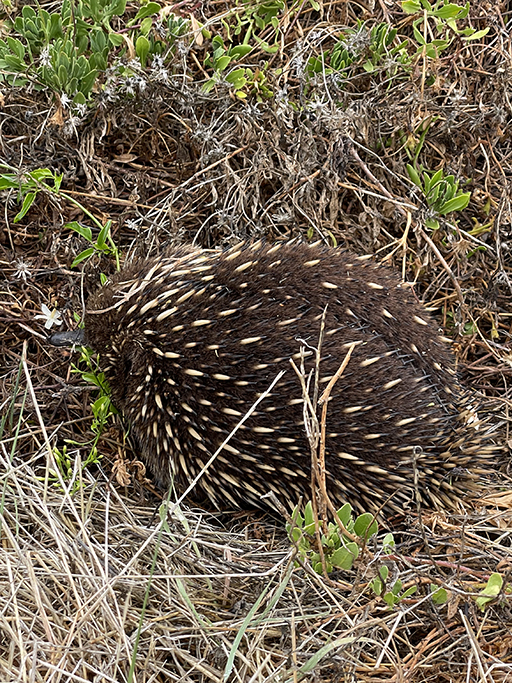
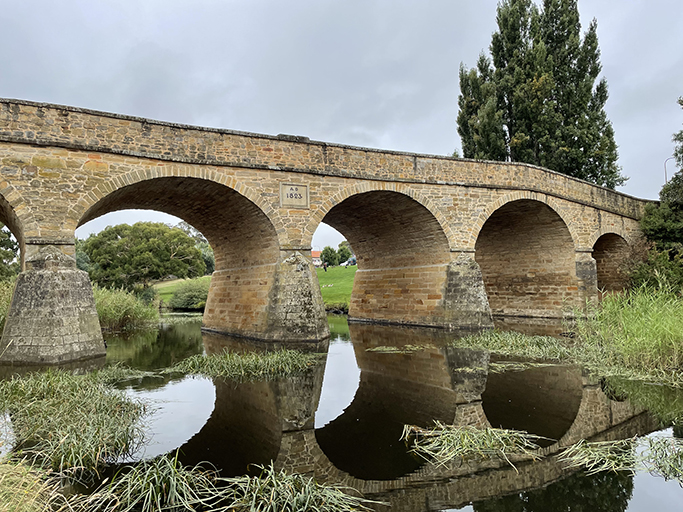
There are many other significant historic buildings in this village, built by chain gangs of convicts between 1833 and 1838. Admire the oldest Roman Catholic Church in Australia, St John’s, and St Luke’s Anglican church, designed by colonial architect John Lee Archer (who also designed the Ross bridge that we will talk about further down). The Richmond Courthouse, The Old Post Office and The Richmond Gaol, which was built in 1825 making it older than Port Arthur.
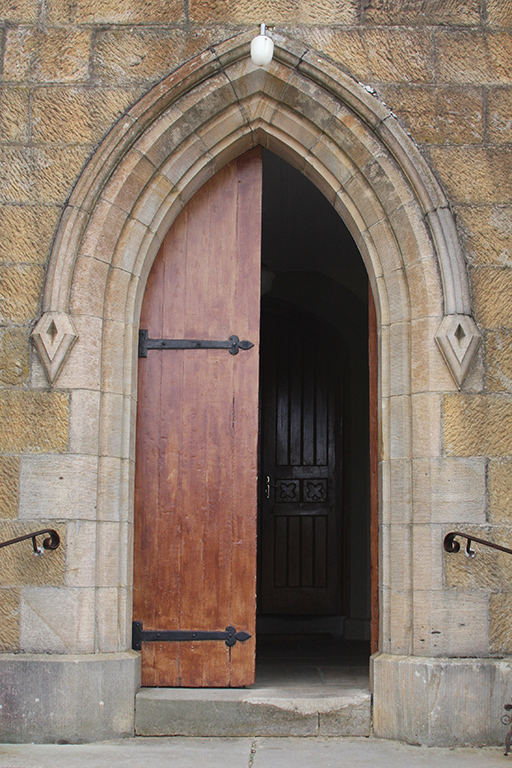
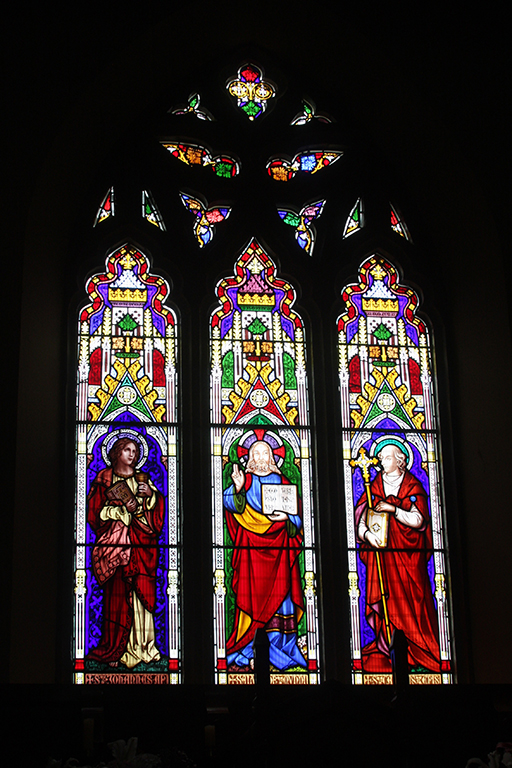
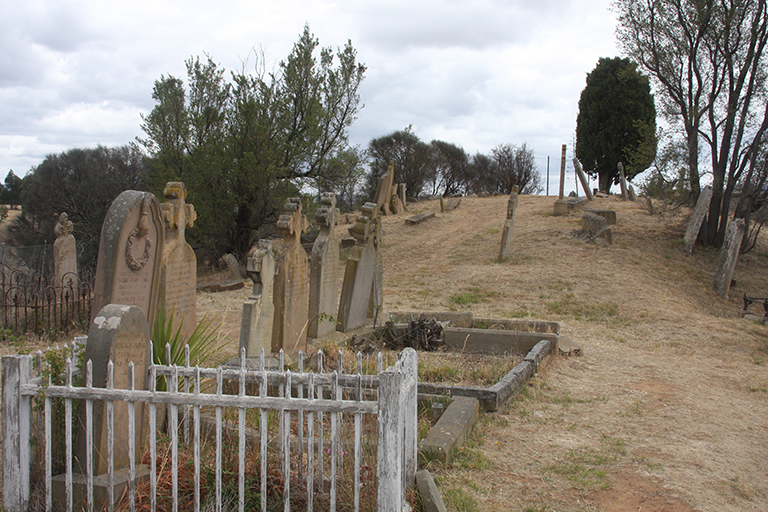
A raft of delightful old Georgian buildings line the main thoroughfare, Bridge Street. There are cafes, galleries, antique stores and boutique shops to explore. Richmond sits in the beautiful Coal River Valley with food and wine options across the valley second to none, cheese, chocolate, wines and fruits are all there for the tasting.
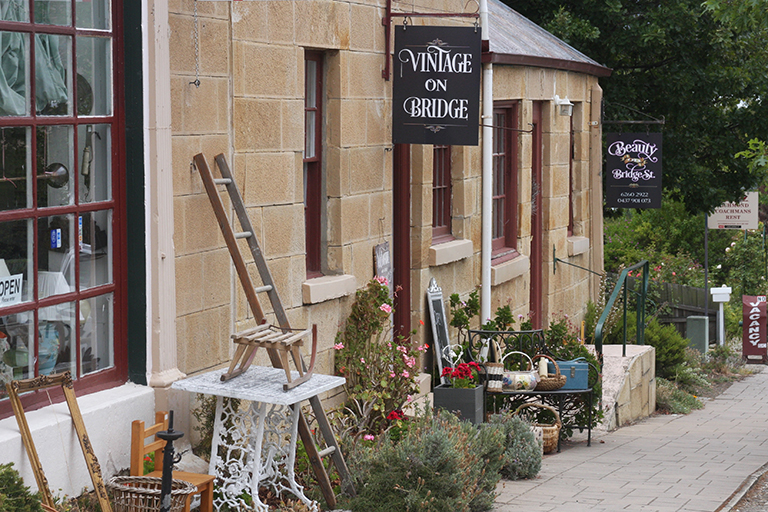
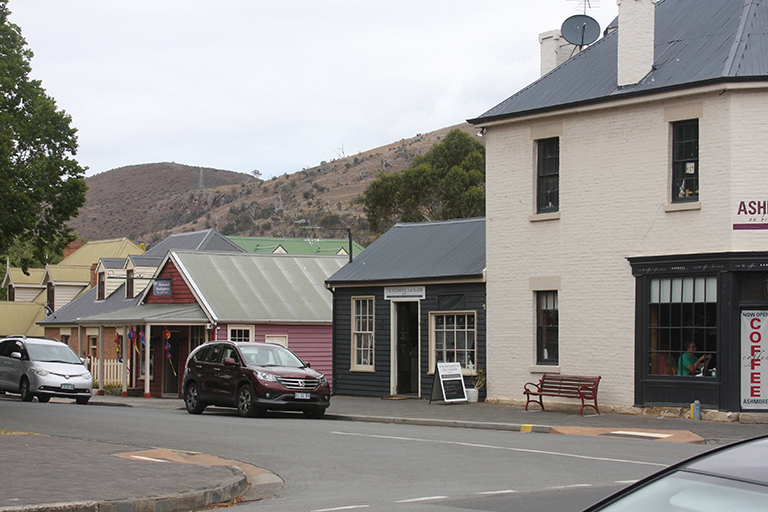
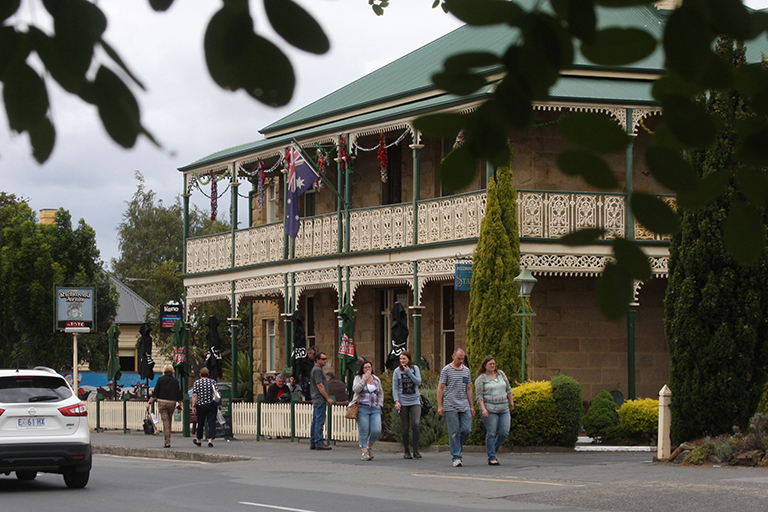
Oatlands
84 km north of Richmond and just a small detour of the highway is Oatlands. Another of Tasmania’s oldest settlements, with Australia’s largest collection of historic sandstone buildings. The well preserved Georgian townscape contains more than 150 original buildings, many of which are convict built. Wandering along High Street will take you past dozens of ancient buildings that have been reinvented as retail outlets, galleries, bakeries, cafes and accommodation.
Dominating the skyline is Callington Mill, built in 1837, this Lincolnshire tower mill has the honour of being Australia’s third oldest windmill. The 2-storey wind and steam driven mill was destroyed by fire in 1912 and has been restored back to full working order. It is the only operating mill of its type in the Southern Hemisphere.
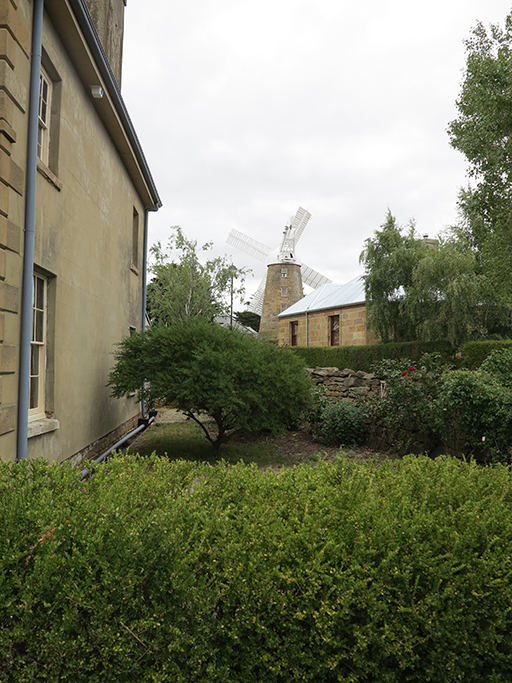
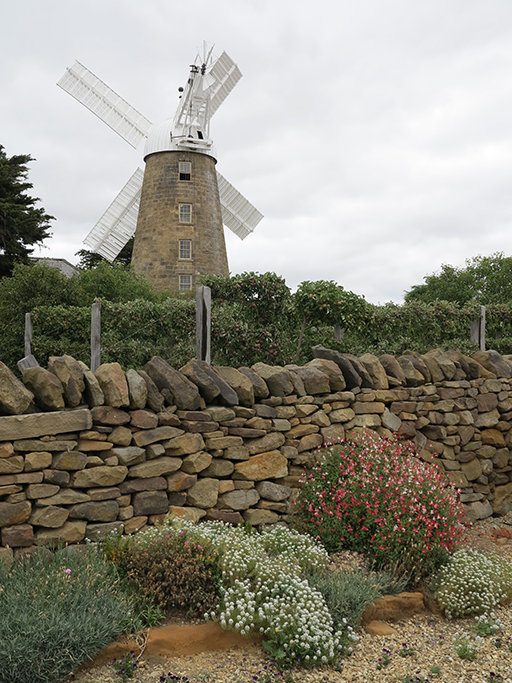
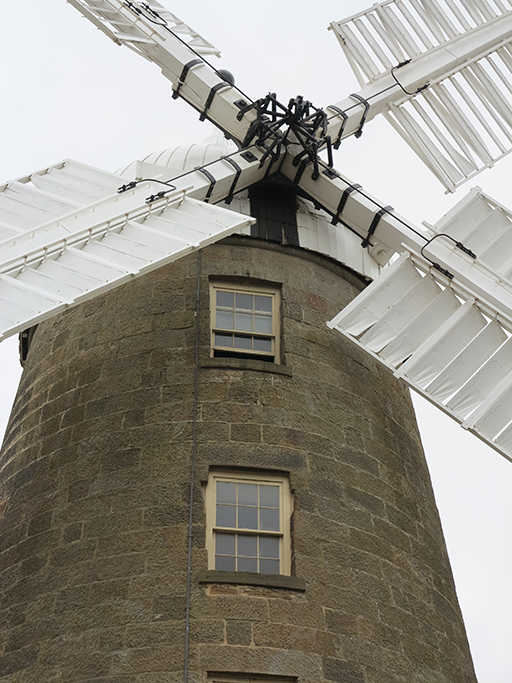
Fun fact: The first European recorded to have lived in the area was Richard Lemon, one of the earliest bushrangers in Tasmania and by most accounts also one of the most vicious. He shot and killed one of his gangmates for speaking Gaelic and another victim was killed by being wrapped in the hide of a stolen cow and then being thrown into the fire. In 1808, a member of Lemon’s gang killed him at his hut at Lemon Hill and took his severed head to Hobart to claim the reward.
Ross
Next on the list is Ross, a little under 40km further up the highway. The pretty riverside village was built by convict labour in the early 1800s and boasts another very impressive historic bridge.
The Ross Bridge is the third oldest in Australia and lies across the beautiful Macquarie river. It’s incredibly intricate and beautifully carved. 186 different carvings were made by the convict stone masons Daniel Herbert and James Colbeck. The men did such a good job that when the bridge was completed, they were granted their freedom.
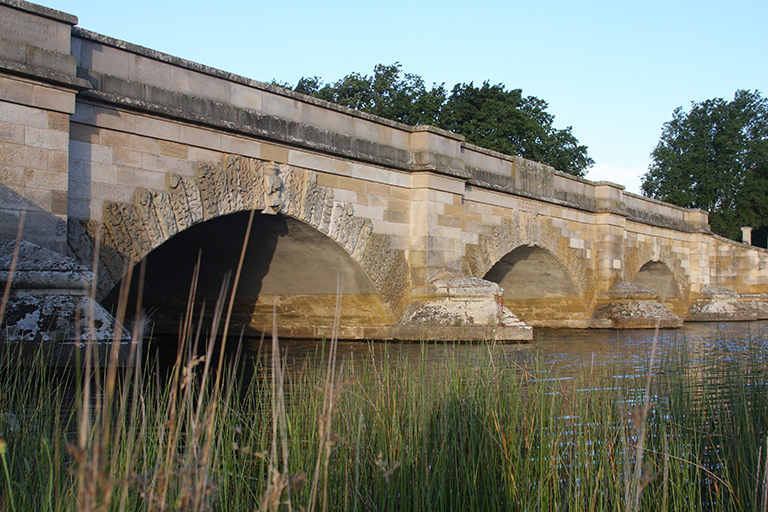
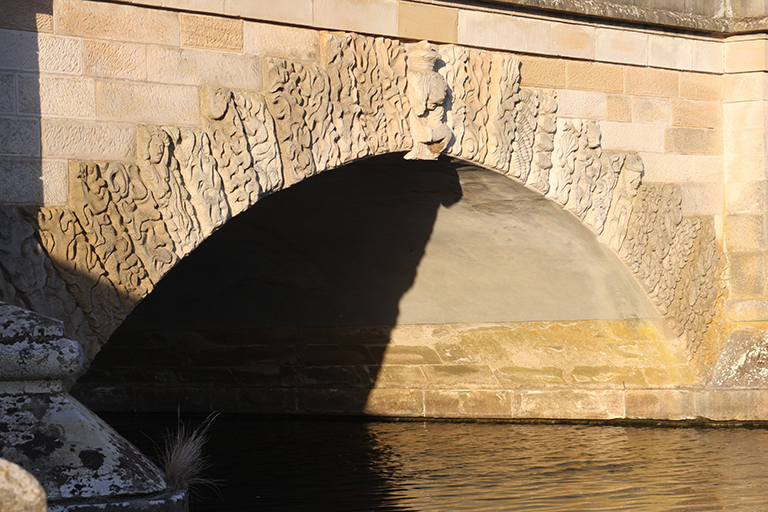
Ross is also home to one of the strangest intersections in Australia. The main crossroads in town is called Temptation, Recreation, Salvation and Damnation. On Temptation’s corner stands the Man O’ Ross Hotel. Recreation is represented by Town Hall. On Salvation’s corner stands a Catholic Church and Damnation’s is a former jail (now a private residence). Cobble-style paths and grand old elm trees lead down Church Street from here, with cafés and shops to explore including the Ross Bakery which has been operating on this site for over a century.
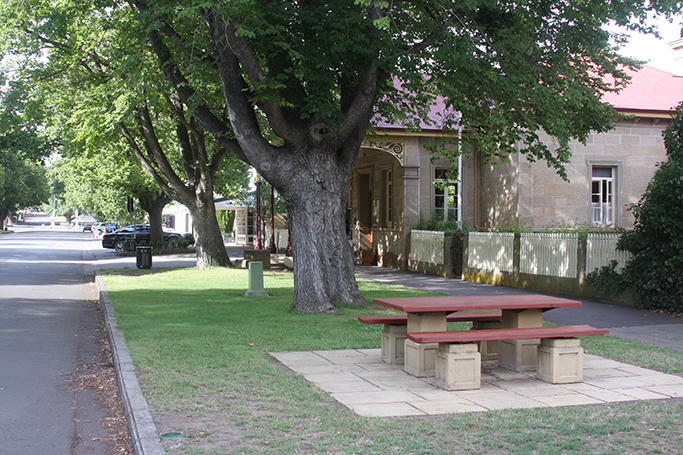
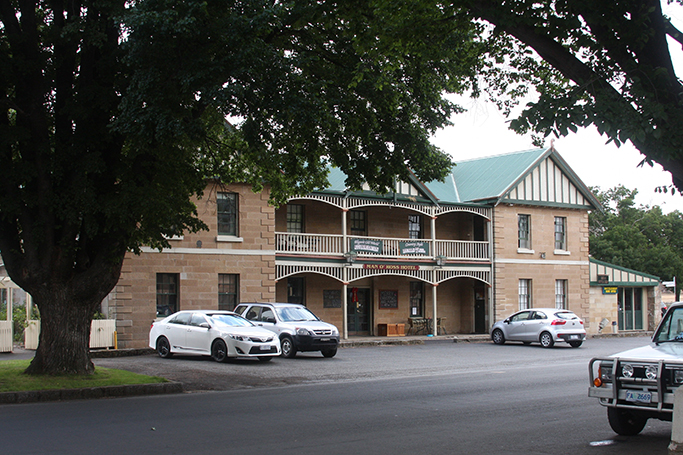
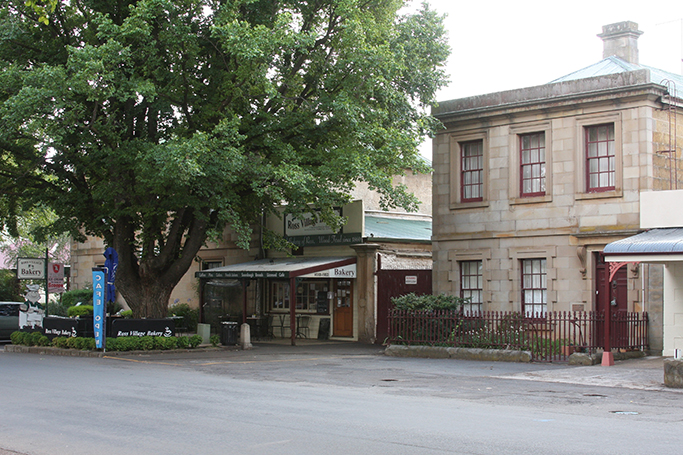
Heading up Church Street in the other direction will take you past The Tasmanian Wool Centre and the Ross Female Factory. This is one of the most intact female convict sites in Australia. The site originally housed convicts working on the Ross Bridge but was later used for female convicts and sometimes their children. Women were taught skills like sewing and eventually relocated to households and other sites.
Evandale
Evandale is not strictly in the Midlands but if you are driving into Launceston it is a must to visit. Turn right down Leighlands Road to explore this beautiful National Trust classified town.
Sitting on the banks of the South Esk River, Evandale is famous for its late-Georgian and early-Victorian buildings, along with the rather obscure fact that it hosts the annual World Penny Farthing Bicycle Championships.
The modern town of Evandale was originally founded as Honeysuckle Banks and then renamed Evandale in 1836, many of the original buildings are still standing today. Altogether, this is one of the best preserved historic towns in all of Australia.
The crown jewel of Evandale and a must do if you are interested in the history of the region is Clarendon House, one of Australia’s greatest Georgian houses still standing. Owned by the National Trust it has a fine reconstructed garden, a tree lined avenue, Italianate façade and restored early colonial outbuildings.
Pop into the beer garden at the Clarendon Arms for some refreshments and check out the remnants of the old watch house and convict cells. Among the prisoners who served time at Evandale was John Kelly, father of Australia’s most notorious bushranger Ned Kelly.
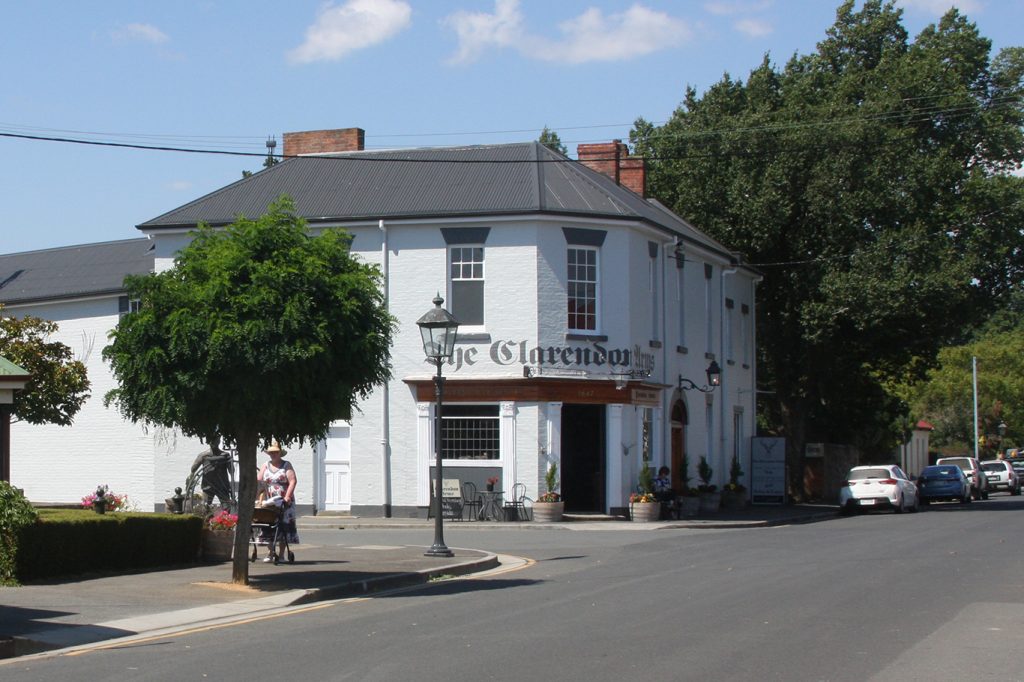
Each of these towns makes a claim to be the most beautiful, the oldest or the best preserved historic town in Tasmania, you will have to visit them all and decide for yourself.
